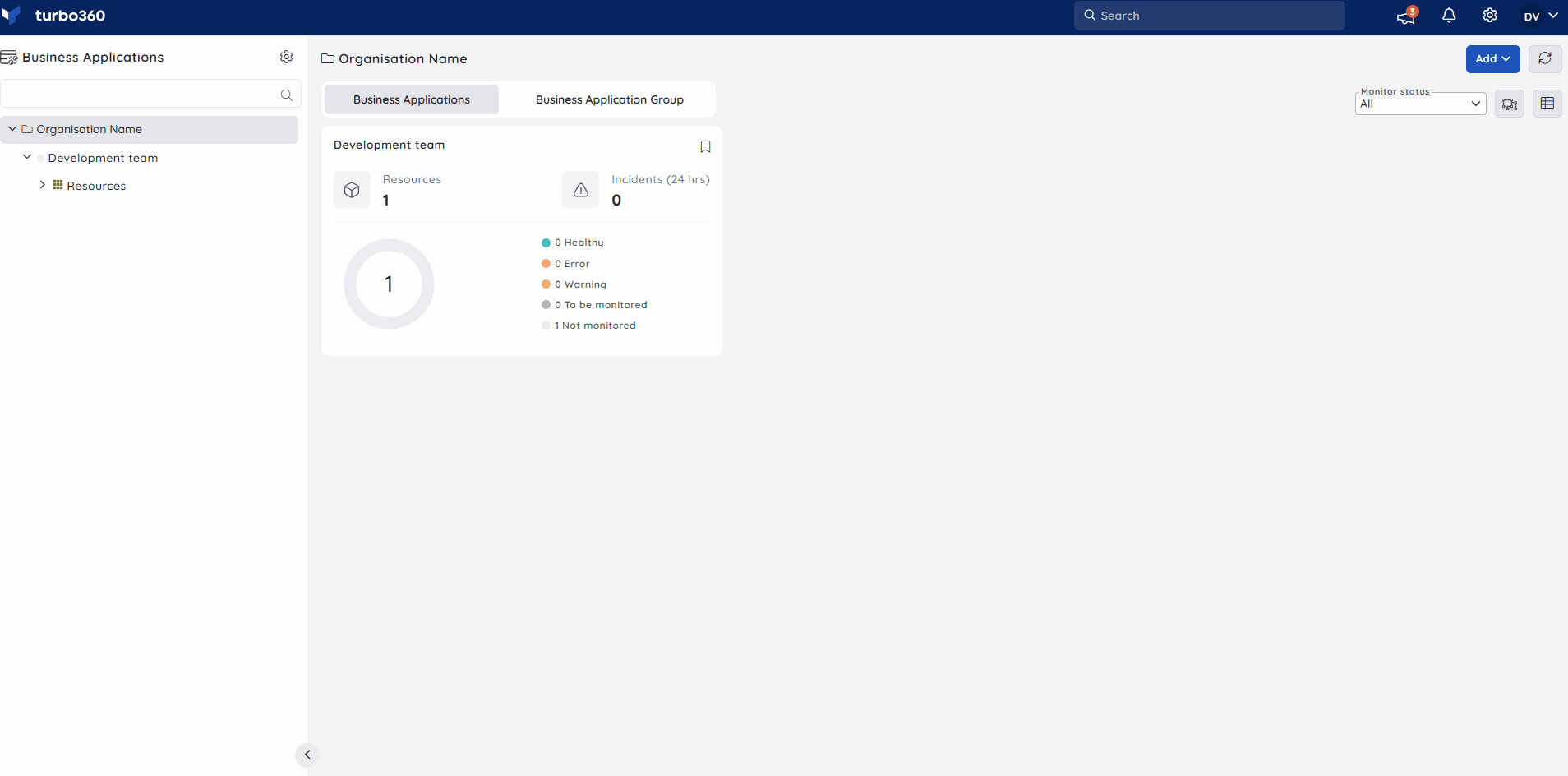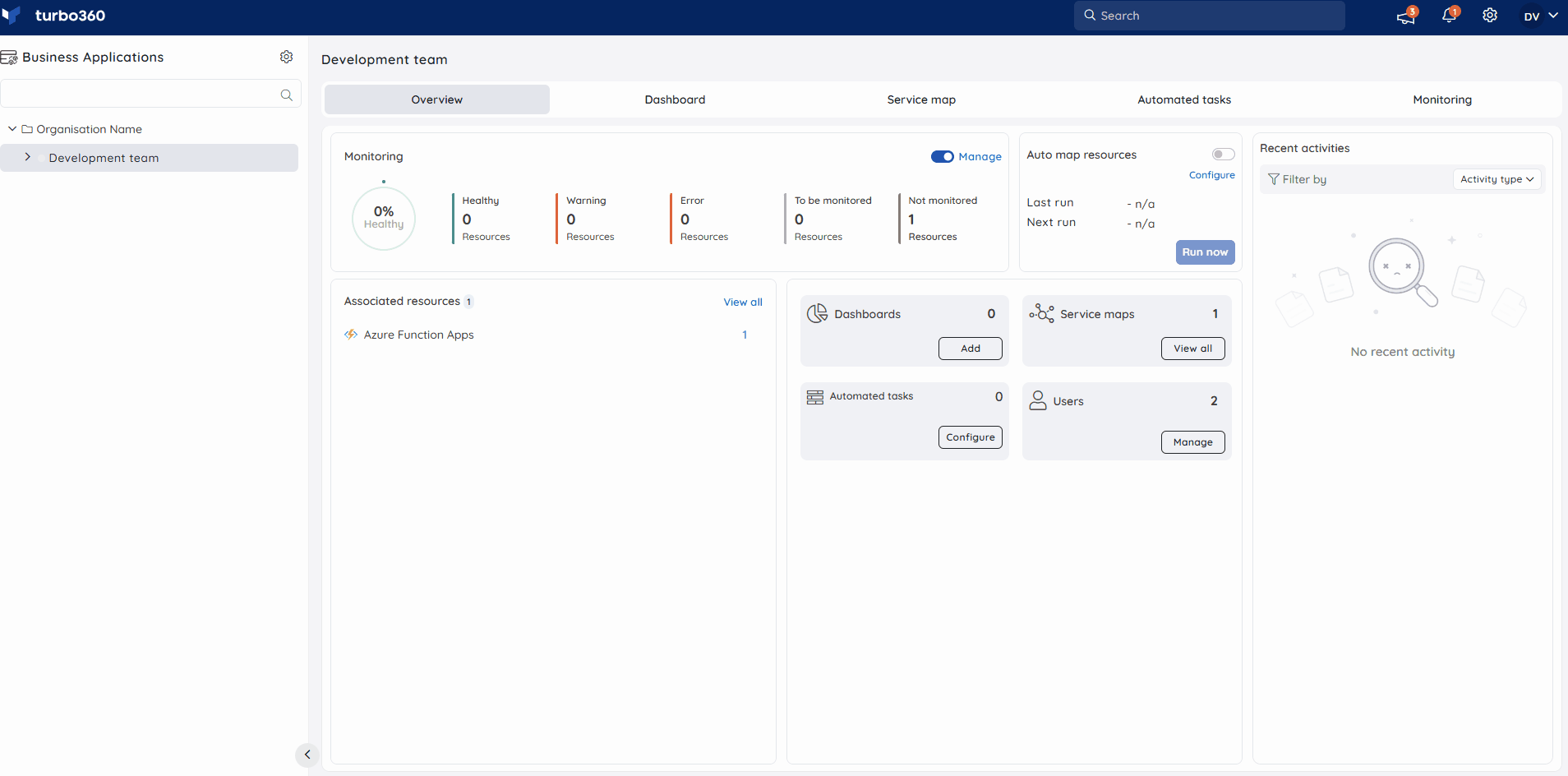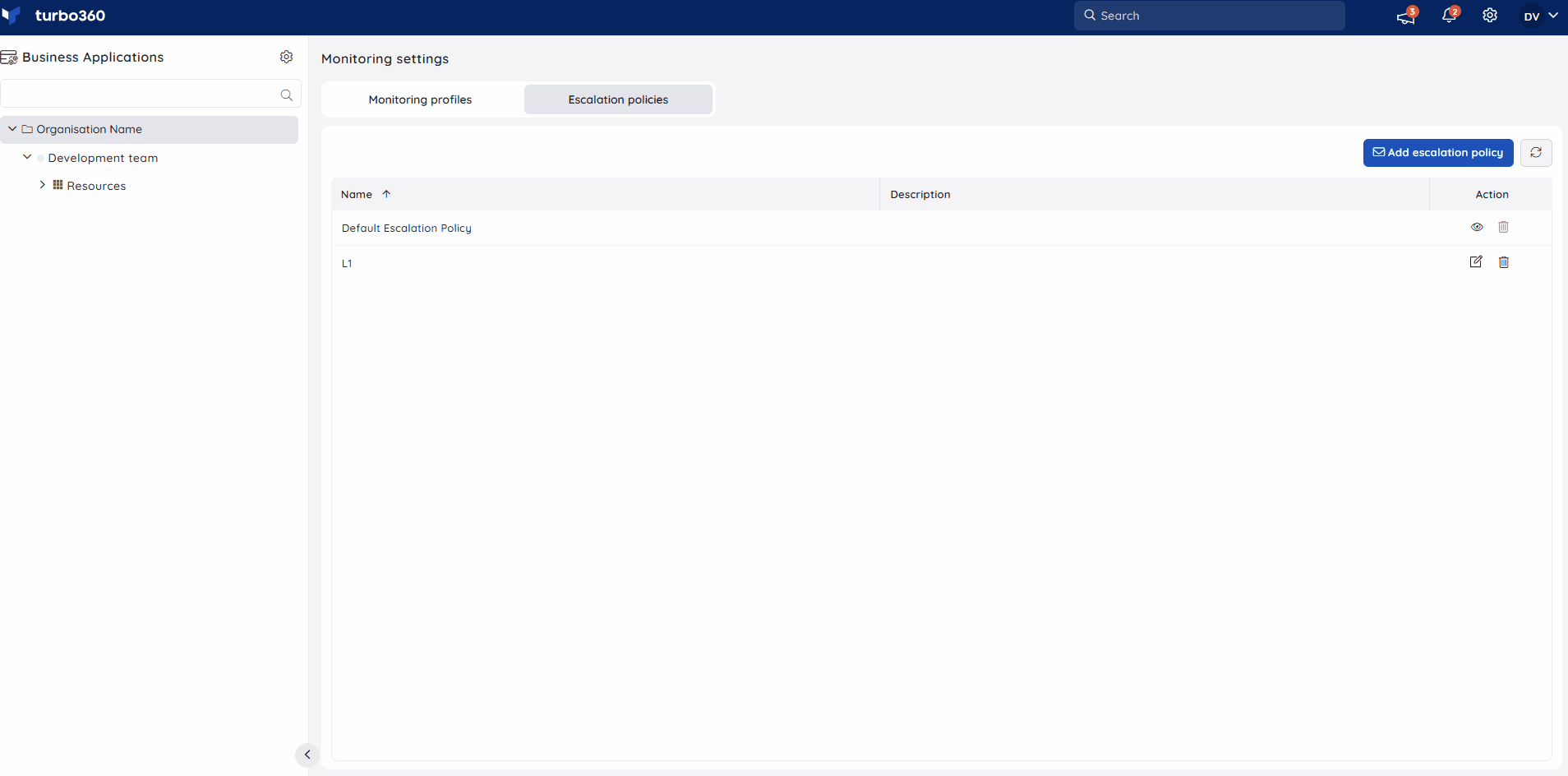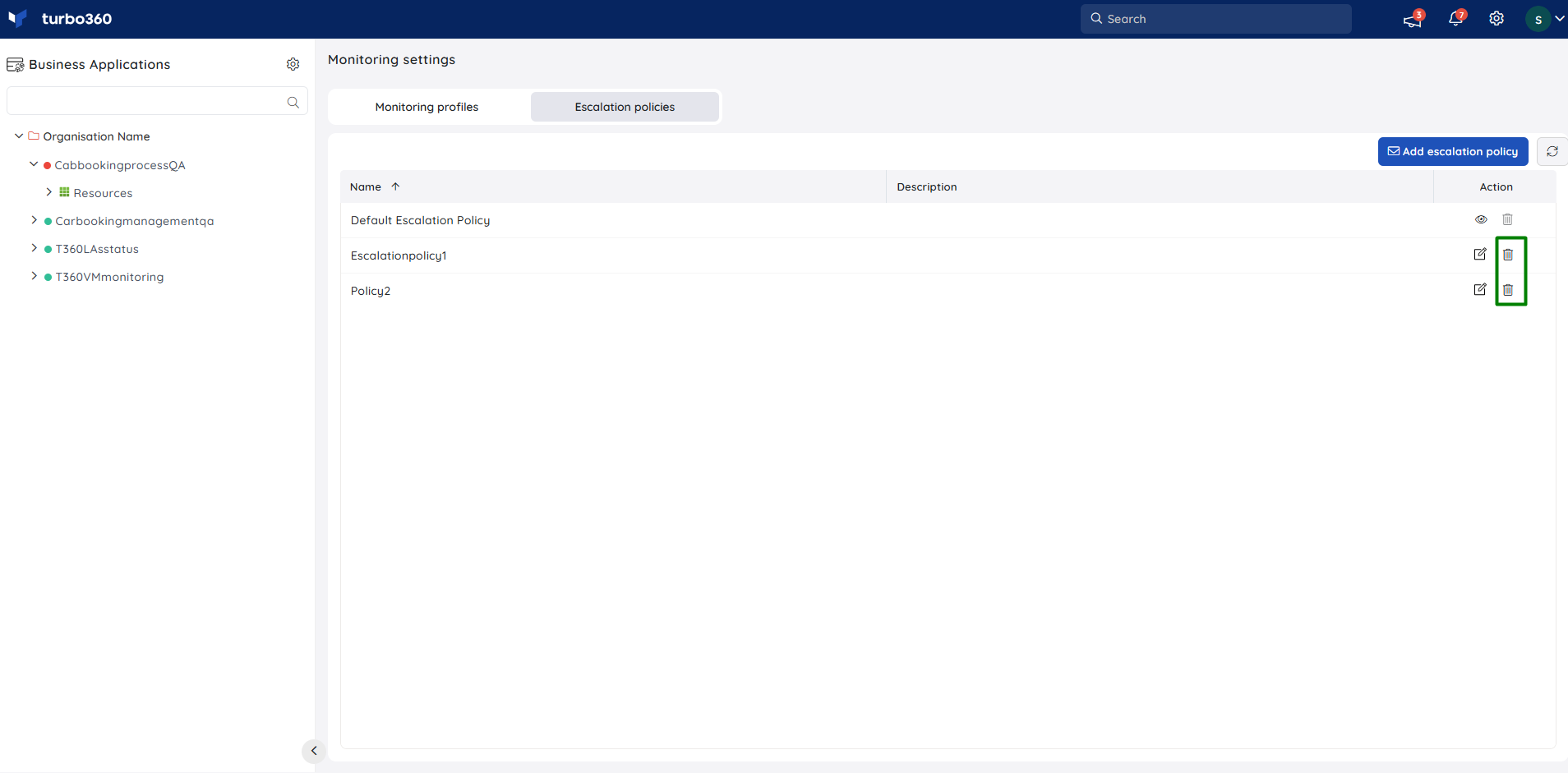- 13 Nov 2025
- 3 Minutes to read
- Print
- DarkLight
- PDF
Escalation policies
- Updated on 13 Nov 2025
- 3 Minutes to read
- Print
- DarkLight
- PDF
What is an Escalation policy?
An escalation policy is a set of rules defined to escalate a Turbo360 alert to the configured notification channels after a predetermined amount of time.
Need for Escalation policy
Problem Statement
Consider the following scenario: an organisation has two major levels in a Support team: L1 and L2. What happens if a Turbo360 alert goes unseen for an extended time period by L1? This will have an impact on organisations that rely solely on Turbo360 for Azure resource management and monitoring.
It would be better if there is a solution to escalate the alert to the higher level (say, L2) so that they might analyze the problem and resolve it.
In addition, there is one more example that succinctly describes the need for an escalation policy. Imagine receiving an alert in a Teams channel and leaving it unnoticed. After a while, you get an escalated mail that is not checked, and finally you receive a call or SMS containing the alert.
The Solution
Turbo360 provides Escalation policy as a solution to satisfy the problem discussed above. Users can specify the time period after which the alert should be escalated.
An escalation policy consists of a set of rules defined by the user, each of which is configured to different notification channels in accordance with the user's preferences.
Default policy is a system-defined escalation policy that configures all the available notification channels by default to it.
Add a policy
- Go to Monitoring settings -> Escalation Policies
- Click the Add Escalation Policy button
- Enter a name to the policy and click Next
- Add escalation rules and configure notification channel(s) or email address(es) for each rule
- Define the time limit for escalating the alert after each rule
An escalation policy can also be set to repeat for a specified period of time if no action has been taken on the alert incident.

- The maximum duration allowed for each rule to be escalated is 3 days.
- A policy can be configured to repeat upto 5 times.
- Each escalation policy can have a maximum of 5 rules.
- The escalation will be stopped only when an alert incident is acknowledged from Turbo360 portal.
Policy Mapping
An escalation policy can be mapped to a Business application by choosing the required one from the list of available policies while configuring monitoring at Business Application level (or) Monitoring profile level.
The notification channel selection and mail configuration for the applied policy can be customized based on user requirements.

Update a policy
- Go to Monitoring settings -> Escalation Policies
- Click the Edit icon next to any of the desired policy
- The name and description can be updated in the initial page. Click Next to proceed
- Perform changes in the escalation rules and channel configuration
- Click Save
In every rule, it is possible to update the notification channel or mail address and have it reflected in all existing mapped monitoring configuration by enabling the "Apply to existing mapped monitoring configurations" checkbox.

Delete a policy
- Go to Monitoring settings -> Escalation Policies
- Click the Delete icon next to any of the desired policy. The confirmation popup displays the list of Business Applications to which the policy is mapped under monitoring configuration
- Click Delete in the confirmation box to delete the policy

Deleting a policy mapped to a Business Application monitoring configuration will replace it with the default escalation policy.
User access policy
The Business Applications module allows controlled management of Escalation Policies through user access policies. This enables flexible, granular access to manage escalation policies without requiring full ownership or contributor rights.
Users can define custom roles that grant permissions for managing Escalation Policies.
These roles allow users to create, update, and delete escalation policies even if their base permissions are limited to a specific Business application groups or applications.


